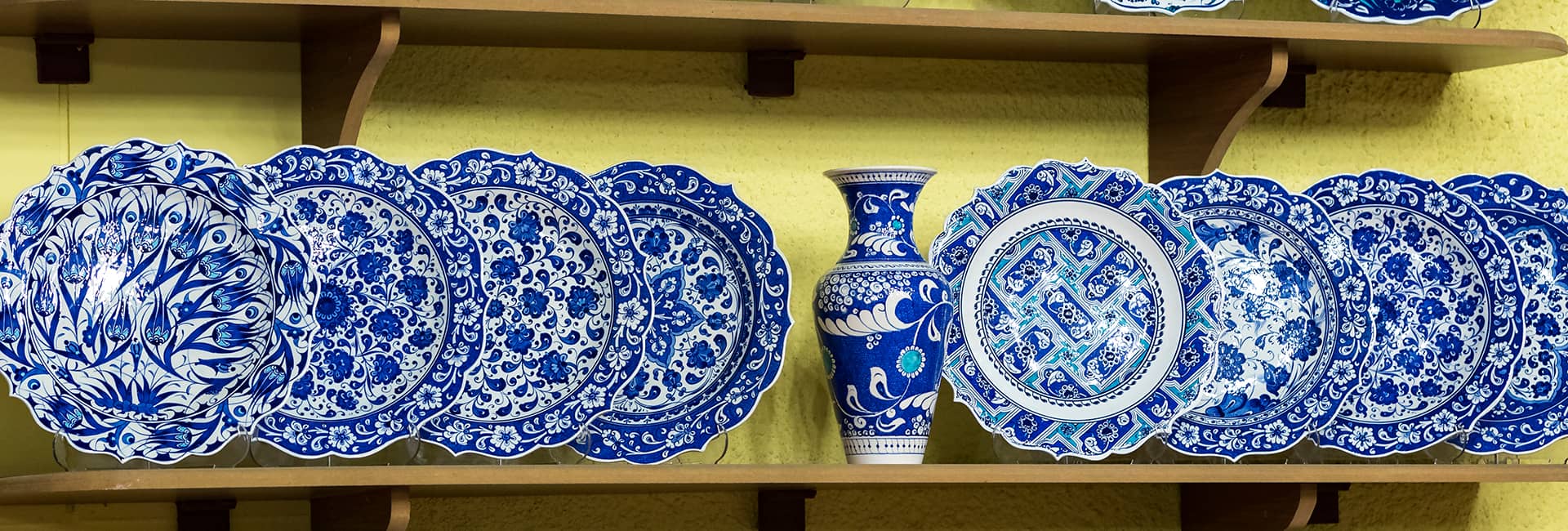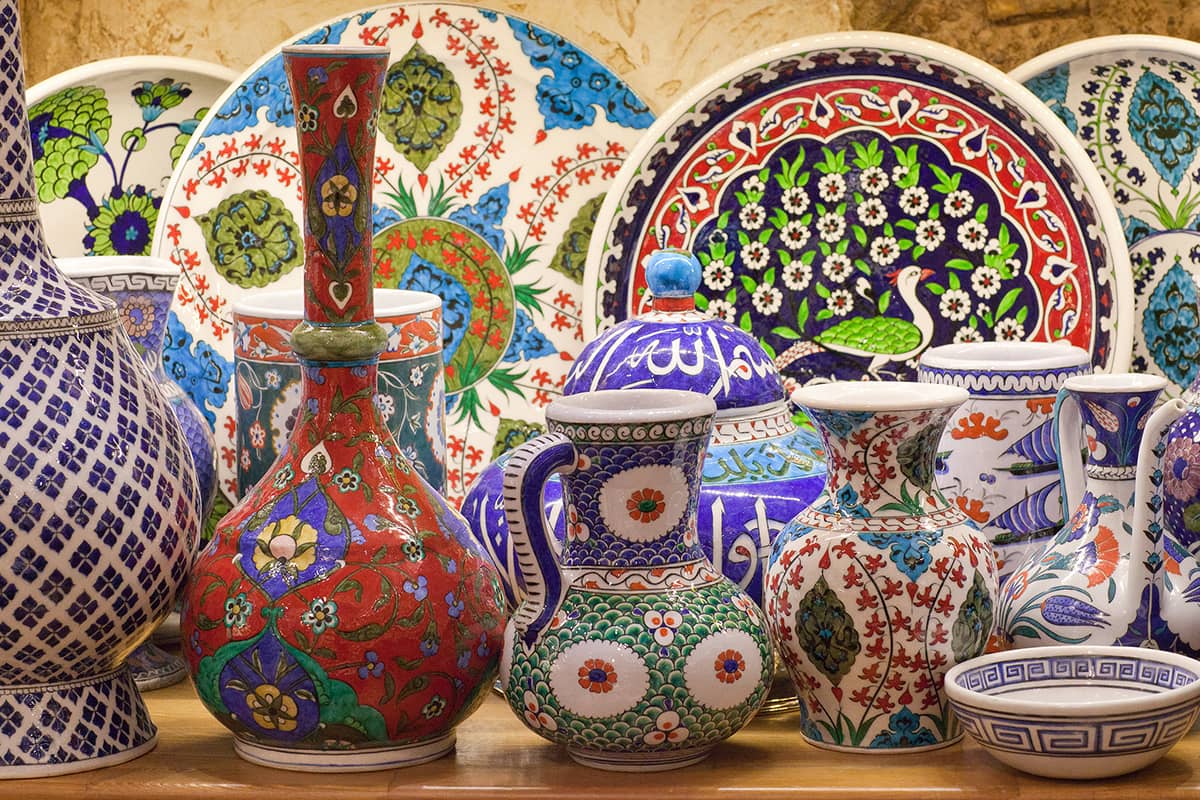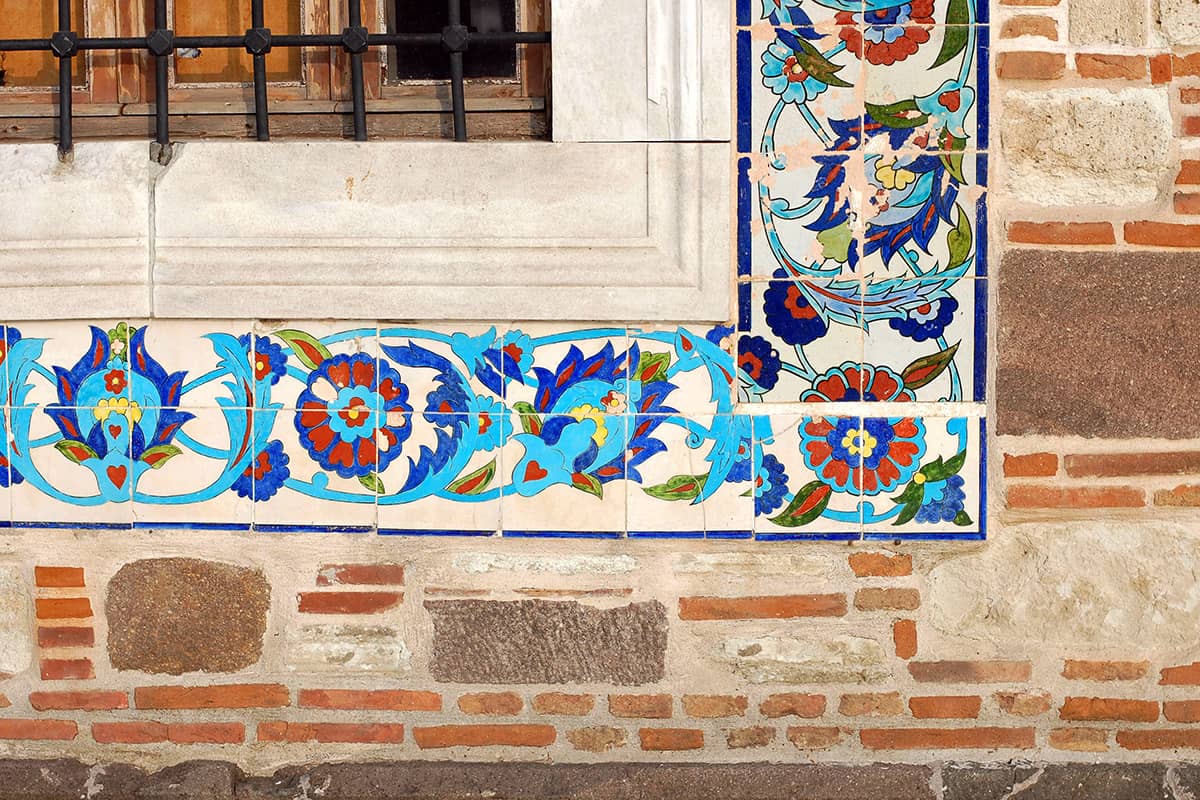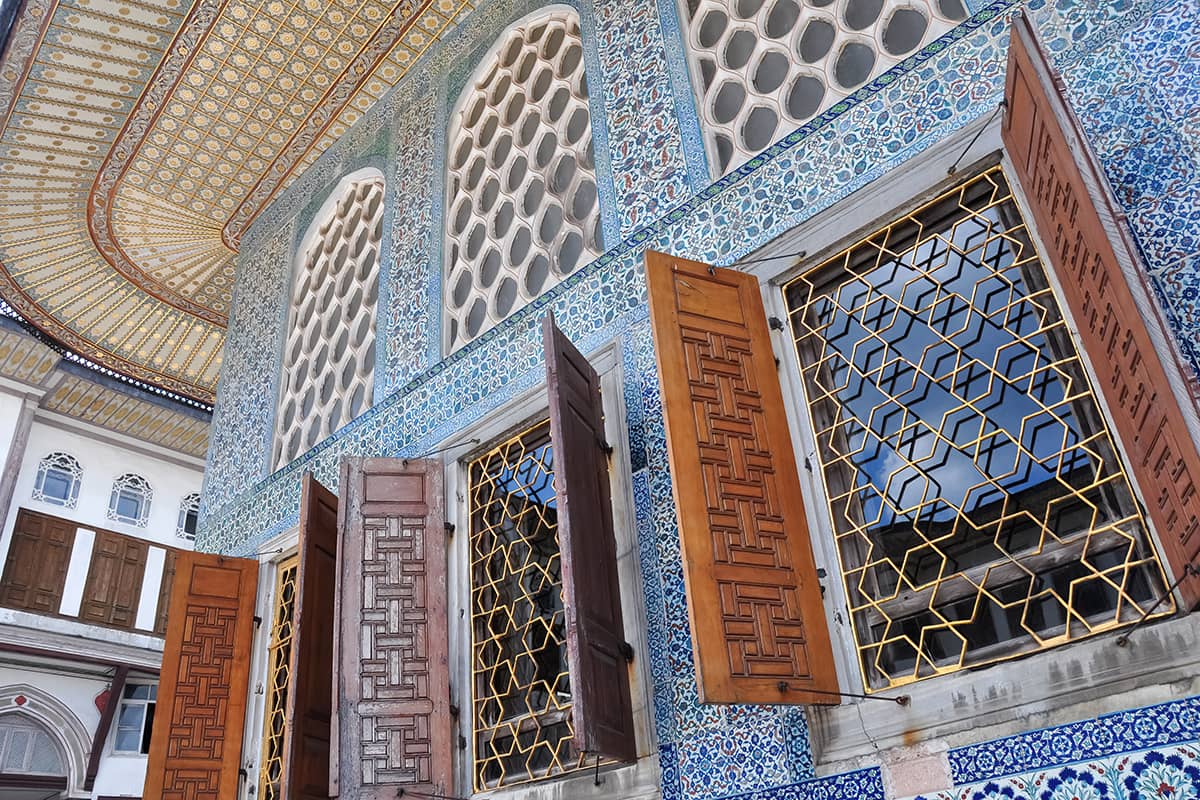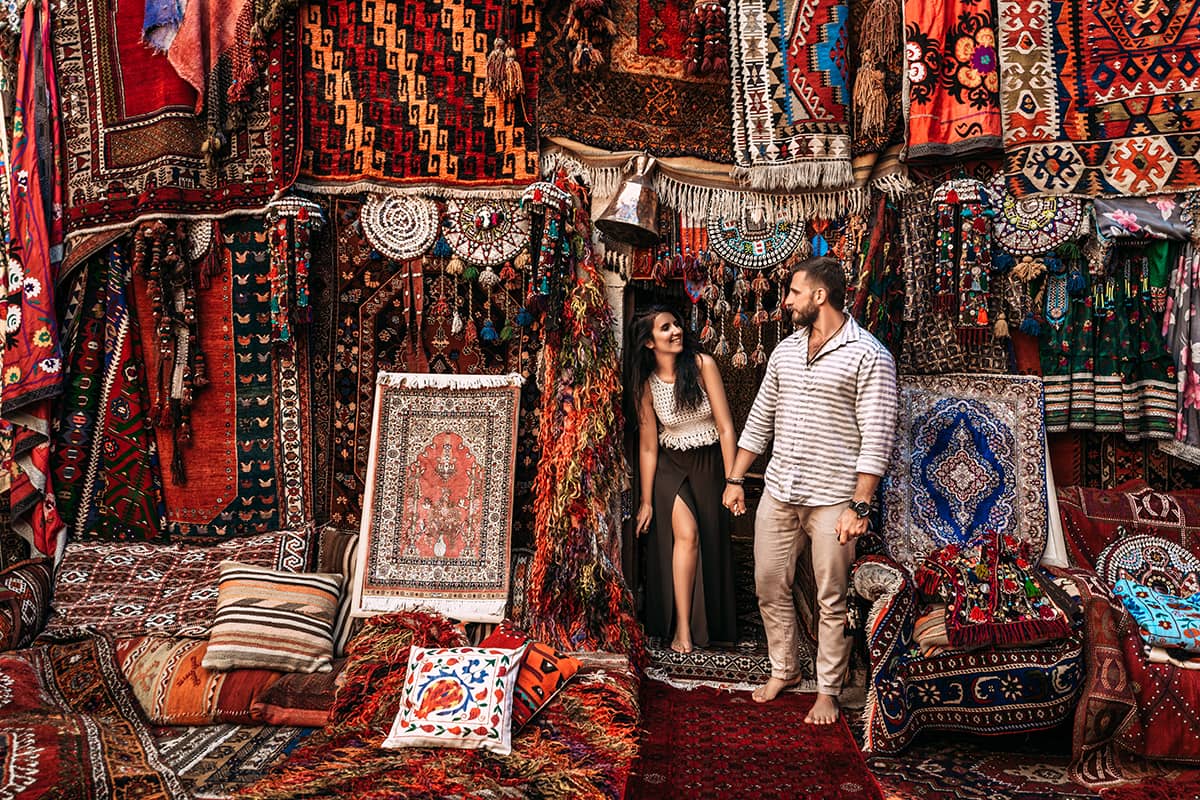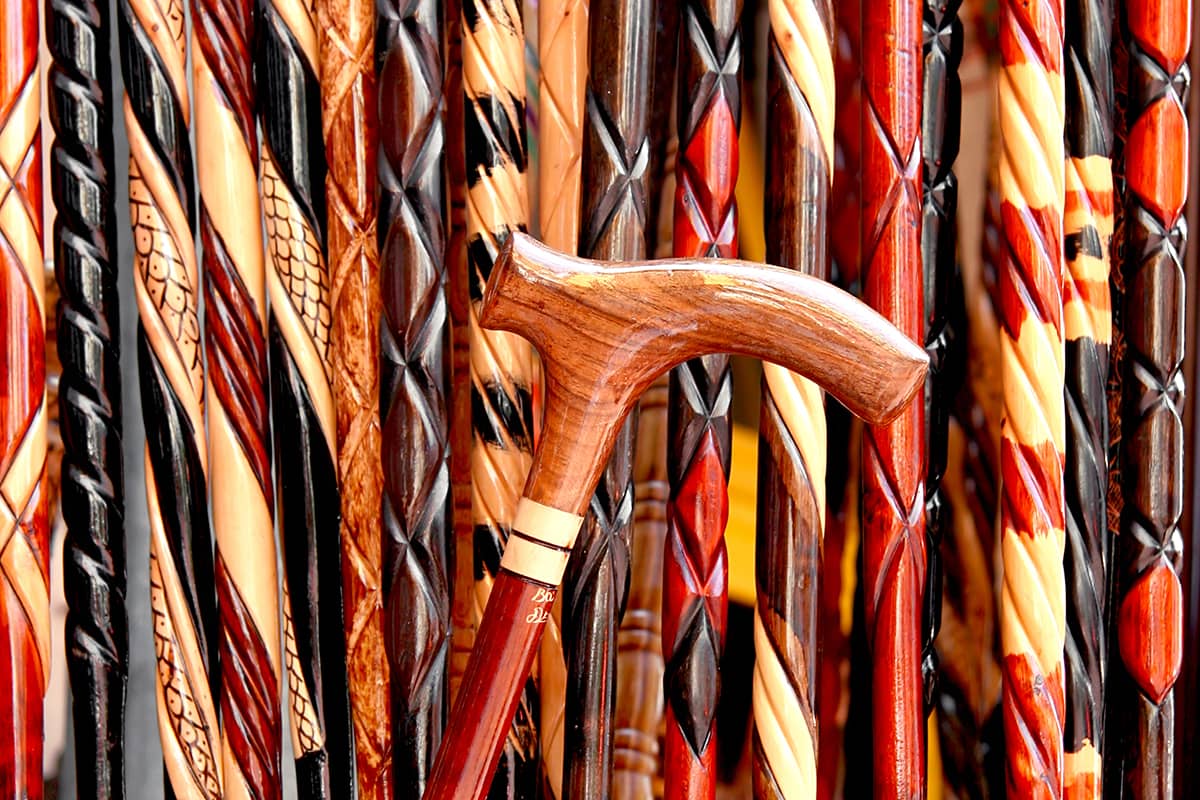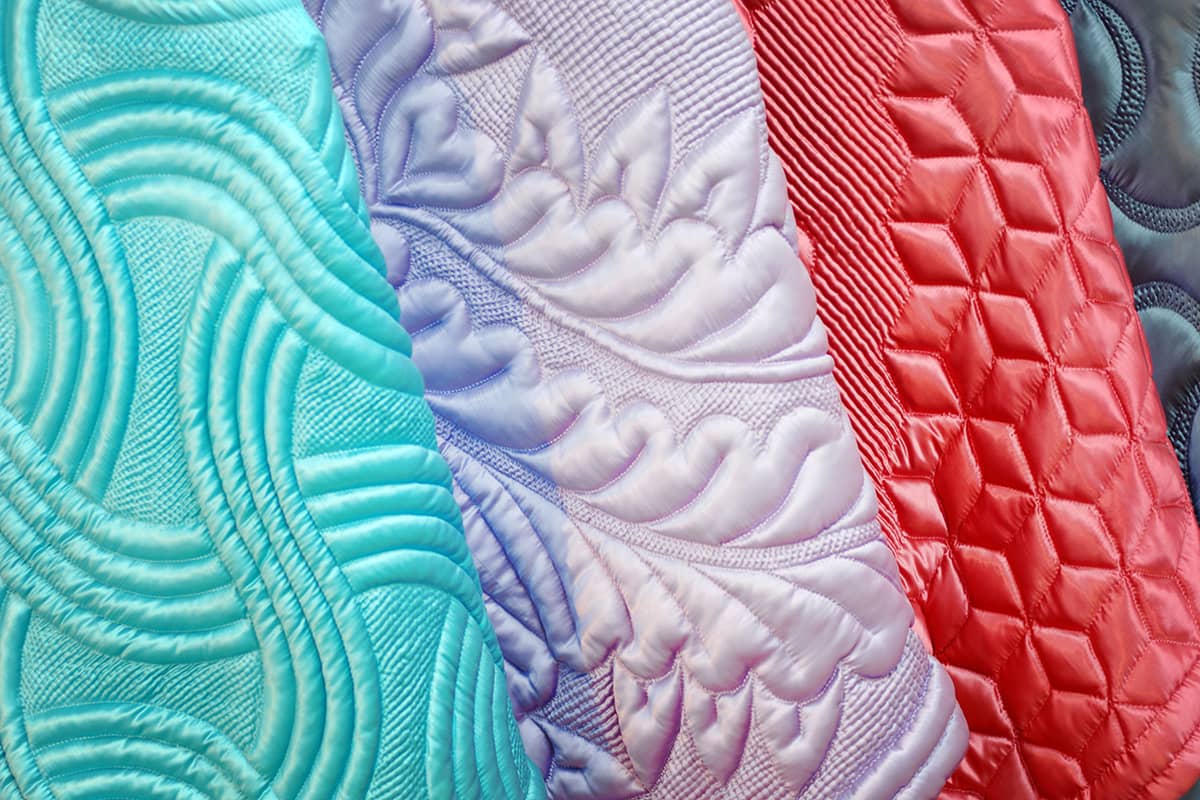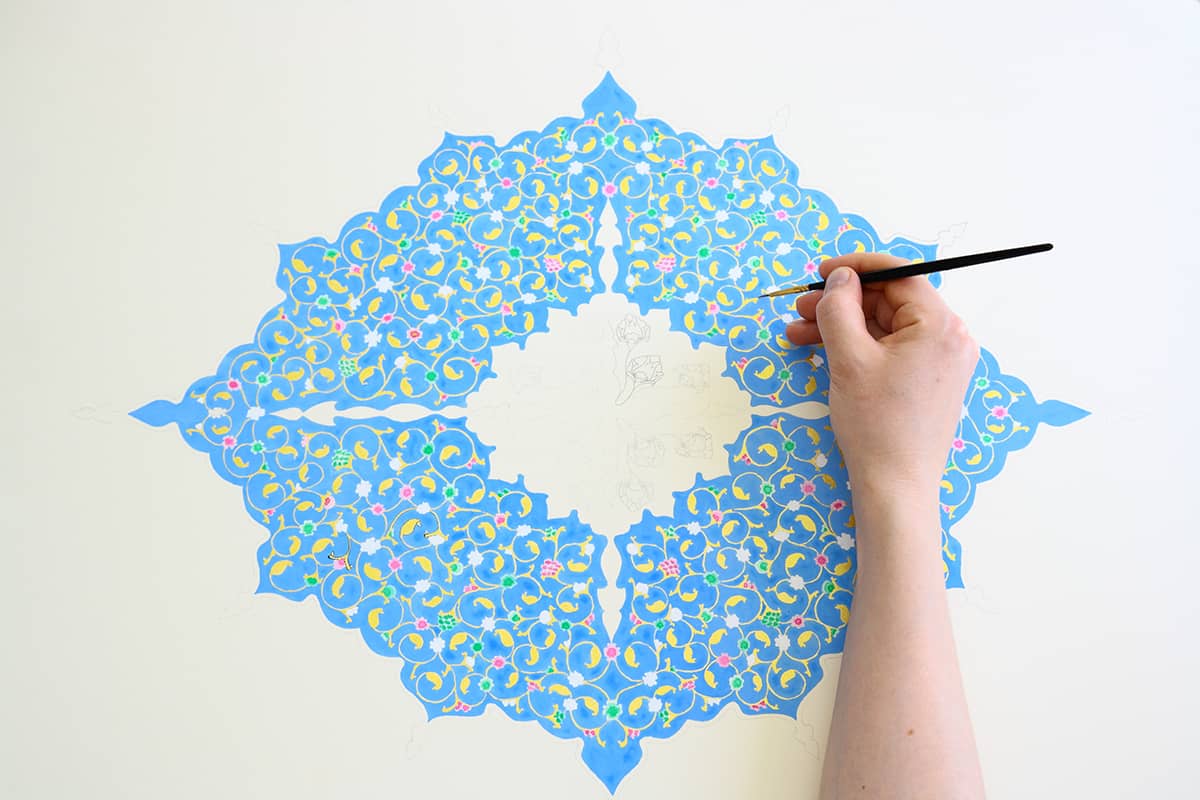


Traditional Turkish Handicrafts and Their History
The particular climatic and geographical features of Anatolia have enabled locals over the centuries to create a unique cultural mosaic. Different civilizations have blessed Anatolia with a cultural heritage that can be found nowhere else in the world. Today, newer traditions emerge as the people of Anatolia combine the past and the present using their creativity and imagination.
Nowadays, there are craft shops on almost every other street across Türkiye, and the locals are always ready to teach you their beautiful traditional handicrafts. From Turkish embroidery to çini tiles, there so many Turkish handicrafts that will attract your attention. Here is a list of the most acclaimed Turkish arts and crafts you might want to know about before visiting Türkiye.
Ceramics, Earthenware, and Çini Tiles
Called by the phonetically identical Turkish word seramik, ceramic is a material produced by firing a non-metallic mineral and shaping it into a unique object - say a vase or a pot. Hard and heat-tolerant, these objects are as functional for everyday use as they are appealing to the eye. Common examples of ceramics are earthenware, porcelain, and tiles, all of which find themselves a place in the everyday life of a Turkish usta, the term used to refer to a master of a craft. Artistic pottery, including tableware, tiles, figurines, and other artifacts are now indispensable decorative and utilitarian items of Turkish homes, and many ateliers welcome visitors to experience for themselves how these unmatched beauties are produced. Archaeology also closely studies ceramic remnants of the past to better understand the cultures, technologies, and behaviors of our distant ancestors.
Talking of the people of the past, it’s important to highlight that çömlekçi çarkı (Turkish for potter’s wheel) is thought to have been invented in present-day Türkiye and more specifically, in Mesopotamia. By the 4th millennium BCE, it is believed that the potter’s wheel had come into use. Its use spread from these lands to nearly all Eurasia and much of Africa, while it still occupies a place in Türkiye’s contemporary culture. Today, you will find examples of çanak çömlek (earthenware), tiles, and other ceramic figures and figurines across the entire country – they are distinguished according to their type, such as çini tiles and earthenware.
Çini Tiles
Generally exhibited on walls, glazed tiles became an essential cultural asset for the Ottomans by the 16th and 17th centuries. Their history, however, dates as far back as the Karakhanids (955 CE) and is known to have accelerated during the reign of the Seljuk Turks.
Known in Turkish as İznik çinisi, İznik tiles are highly decorated ceramics. They feature motifs of plants, animals, and other geometrical shapes and patterns. İznik tiles are mostly colored in blue and red, while some exceptional varieties also use black
The Sultan Ahmet Mosque in İstanbul and the nearby Topkapı Palace are two of the prominent structures where tiles have been used extensively as a wall decoration. The Sultan Ahmed Mosque alone showcases 20,000 tiles, which is why the mosque is also known as “Blue Mosque.” The traditional craftsmanship of çini-making has been added to the UNESCO World Heritage Tentative List since 2016.It’s always wonderful to know that local artisans and crafts are appreciated internationally!
Tiles have become an indispensable part of Turkish art and culture with examples available across the county. Located toward the easternmost part of the Aegean region, Kütahya is famous for its porcelain, which has been an important part of the city’s culture since the 14th century. In the province of Kütahya, there is a Tile Museum (Çini Müzesi) next to the Great Mosque (Ulu Cami) that exhibits some of the finest examples of Kütahya ceramics. Fine examples of tiles can also be seen in the Tiled Kiosk and the Pera Museum, both located in İstanbul.
Çanakkale is another city that’s famed for its ceramic tradition. In fact, its name can be literally translated as “pottery castle”! Çanakkale ceramics are often painted over with creamy glazes (usually clear), and they are very diverse in appearance. Reflecting regional characteristics, ceramics first appeared here in the 18th century.
Earthenware
Pottery (çanak çömlek) has been practiced in Anatolia for many centuries, and has served as a source of income for locals. Since it is not possible to produce quality pottery using only one type of clay - it would crumble during the process - a special red paste, taking its color from local soil, is used, and makes the objects extraordinarily strong.
Coppersmithing
It’s been more than 10,000 years since copper was first used for making tools and weapons. Copper objects have become an established art form, and copperwork is now cited among the most renowned handicrafts of Türkiye. Every year, thousands of functional and decorative objects are produced using copper. The practice originates in Central Asia, and it’s thought to have been brought to Anatolia by the Seljuk Turks.
Türkiye is also the birthplace of a certain technique of smoothening the metal by heating, which is known in Turkish as tavlama. The country is a very important cultural center of this craft. The speed, precision, and skills displayed by coppersmiths are truly extraordinary! If you are interested in Turkish traditional art, make sure to stop by an atelier if you have a chance!
Ornamented coffee pots (cezve) and pepper grinders are common metal objects that can be found everywhere from local bazaars to little souvenir shops. For famed samples of local metalwork, visit Bakırcılar Bazaar in Malatya, where you can find a great variety of metal objects for yourself, friends, and family.
Weaving
For thousands of years, Turkish rugs have been the gold standard in floor covering across the globe! They are made exclusively by hand - the endeavor that is required by the locals who make them stands out as a feature to be deeply appreciated! Rugs can be made of silk, wool, or a wool-and-cotton blend. The dyes that are used are all natural, using everything from rose madder to indigo and onion skin, thus attaining some very subtle, organic colors.
Kilims, flat-weave rugs, are a truly remarkable tradition that has been maintained by the local people of Anatolia for tens of generations, dating back almost 9,000 years. Turkish people started to busy themselves with this mysterious art form as they settled in Anatolia.
The oldest record of kilims comes from the Çatalhöyük area (founded c. 7000 BCE), a Neolithic proto-city and the oldest such settlement ever to be discovered. The site is located to the southeast of Konya, in the heart of the Anatolian region. This tradition is continued in other parts of Türkiye including, but not limited to, Kapadokya. If you find yourself in Kapadokya, don’t forget to get your photograph taken in a kilim shop – the rugs will be the perfect backdrop to your smile!
Ebru
Ebru or paper marbling is the art of creating colorful patterns by sprinkling and brushing color pigments on a pan of oily water and then transferring this pattern to a special paper. The designs that are most used include flowers, foliage, ornamentation, latticework, mosques, and moons. The art of ebru was traditionally used in bookbinding, but in time it has become a separate genre of art.
It is believed that the technique was invented in the 13th century in historical Turkistan. New forms and techniques were added in time, and Türkiye has remained the center of marbling for many centuries. Up until the 1920s, ebru artisans had workshops in the Beyazıt district of İstanbul, creating artwork for both the local and the European market.
Jewelry Production
As Türkiye has always been a crossroad for different cultures and religions, its jewelry techniques have inevitably been influenced by the European and Middle Eastern traditions in jewelry production. Whereas jewelry created in Europe was highly symmetrical, the Turkoman jewelry traditions have prioritized the preservation of the original shape and natural color. Now a highly sophisticated and revered art form, gold jewelry production is thought to have blossomed in the period that spans the country’s Byzantine and Ottoman past.
Today, Türkiye is cited among the top five countries globally in gold jewelry production. It’s crucial, however, to remember and acknowledge that the earliest examples of jewelry in present-day Türkiye were crafted from copper, the most commonly used metal of all times. In the Bronze Age in Anatolia, the tradition was to wreak and cast this metal. Original Turkish techniques like savaklama, küftgani, ajir kesme, and kazima were used to produce copper accessories, while some of these are still in use today.
Woodworking
The Seljuk Turks excelled in the working and processing of stone and wood. They cut and carved pieces of wood into octagons, diamonds, or stars according to the design intended. Their most common products were mosque niches, mosque doors, and cupboards. In fact, the production of such handcrafted objects still serves as a source of income for Turkish ustas.
The development of certain original techniques, including carving and kündekâri, marked the blossoming of this tradition in present-day Türkiye. The materials used are mostly walnut wood, applewood, pearwood, cedar wood, ebony, and rosewood.
As a result of their transient nature, most wooden objects of the past have not survived to our day. However, some of the finest examples of wood workmanship from the 8th to the end of the 19th century can be found in the Museum of Turkish and Islamic Art in İstanbul. Today, the most common wooden product that a Turkish usta produces is a walking stick. To find the most beautiful examples of decorated walking sticks, head for the cities of Zonguldak, Bitlis, Gaziantep, Bursa, and Ordu.
Kündekâri is made by combining small wooden pieces in geometrical shapes to create larger surface areas. It’s most often used for window shutters, door wings, lecterns, and minbars. Some of the finest examples of this art form can be seen in the Great Mosque (Ulu Cami) in Siirt, Alaettin Mosque in Konya, the Great Mosque (Ulu Cami) in Manisa, and the Great Mosque (Ulu Cami) in Bursa.
Knitting, Embroidery, and Oya
Turkish handicrafts are represented by a rich variety of thick and thin fabrics made with hooked and knitting needles, hairpins and shuttles with silk, cotton, and woolen threads. In almost every household across Türkiye, you can come across somebody busying themselves with at least one of these popular handicrafts.
Thought to have peaked in the 16th century, the art of embroidery in Turkish culture dates back to Turkic nomads. Many designs are used but geometric and floral patterns are among the most popular. Embroidery takes on different names depending on the tool and technique that is used such as needle embroidery, shuttle embroidery, hairpin embroidery, and knitting. One of the most famed styles of embroidery, known as bead embroidery, originates in Adana and İçel. If you are interested in embroidery, we highly recommend visiting the Military Museum in Harbiye, İstanbul where embroidered objects belonging to Seljuk and Ottoman soldiers can be seen.
Used to describe decorative lace trimmings that adorn women’s garments and household textiles, oya, also known as Turkish lace, appears all across Anatolia in various forms and motifs. The tools used include needles, crochet hooks, shuttles, and pins. Affluent aristocratic women in the major cities of the Ottoman Empire practiced needle-made oya – a craft still very popular in Türkiye today.
Yorgancılık (Quilt-Making)
In the Turkish craft of yorgancılık or quilt-making, the backing and the lining are made using cambric or unbleached muslin. Satin or printed cotton is used for everyday quilts, and the desired pattern is created across the fabric. While a quilt with a simple design can be made in one and a half days, a complex pattern may take a week or as long as a month to complete.
Quilt-making was a profession in the Ottoman Empire, and today in Türkiye there are still professional quilters in certain bazaars and neighborhoods.
The Art of Tezhip
Tezhip is a type of illuminative art which was once employed exclusively in handwritten books or sacred books to supplement and decorate the text. In the strictest definition, it refers only to manuscripts decorated with either gold leaf or shell gold paint, as the very word “tezhip” means “covering in gold” or “coloring with gold leaf.” But in common and modern usage, this traditional art has come to also be practiced with color. The müzehhip (illuminator) uses a needle to impress the designs he or she has drawn onto paper attached to a hard boxwood or zinc base. Then they place the perforated paper onto the material they intend to decorate, and fill the holes with a sticky, black powder. When the paper is removed, the design is left behind. The motif is then rounded out and filled with the gold leaf or paint.
The earliest examples of illumination have survived from the Eastern Roman Empire and therefore, in part, are found in present-day Türkiye. However, the Western tradition greatly differs from the Ottoman tradition which tended to be more commonly practiced with gold leaf and included floral patterns. The Western tradition used illumination more commonly in Christian religious texts and prayer books, and in time, came to be replaced by picture illustrations.
The history of tezhip in Turkish culture goes back to the Uyghurs in the 9th century. Deeply rooted in Turkish culture, its peak can be roughly dated around the 15th and 16th centuries, in the Ottoman Empire. Ottoman Turks created a new style of calligraphy (talik), and the art of tezhip was employed to adorn its margins. The decoration of the sultan’s signature, known as a tuğra, was among the duties of the Ottoman müzehhip, whose patron was the sultan himself.
The Art of Miniature
Minyatür (miniature) refers to the art of illustrating stories, events, or texts by a specific method of painting. It’s traditionally performed by painting on paper which has been glazed with egg and colored with organic dyes. Today, however, industrial dyes and equipment are also used. Miniature paintings often depict courtly ceremonies like accessions and circumcisions or war scenes, and can therefore be said in a way to function as historical documents as well.
Though the art of miniature was originally employed as a method to supplement and decorate manuscripts, as was the case with tezhip, with the passage of time, miniatures appeared on other materials like walls, canvases, wood, tiles, and leather. A miniature usta is called nakkaş or müsavvir, and the art of miniature in Ottoman times was known as nakış or tasvir. Some of the most acclaimed miniaturists include Mustafa Çelebi, Süleyman Çelebi, and Levni.
In 2020, the art of miniature was added to the UNESCO Representative List of the Intangible Cultural Heritage of Humanity on behalf of Türkiye, Azerbaijan, Iran, and Uzbekistan.
